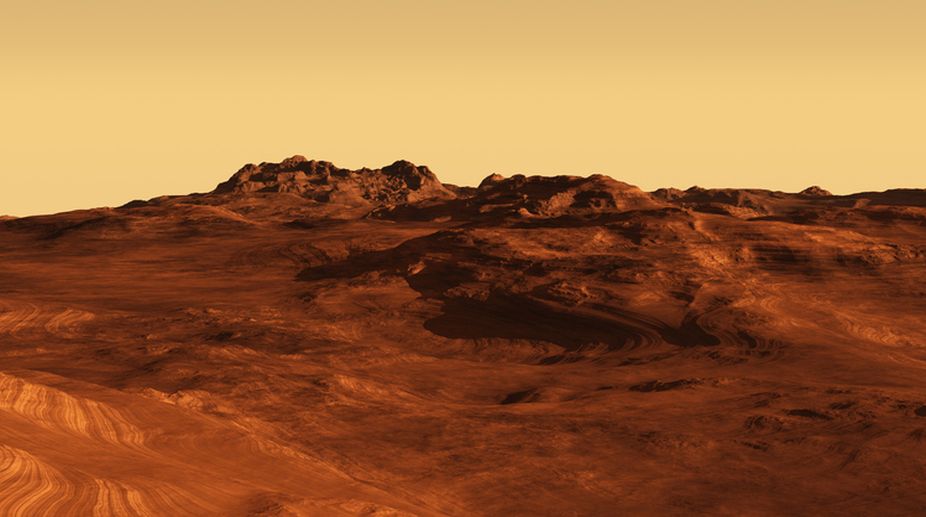NASA’s next Mars mission known as InSight, which is scheduled for a 2018 lift-off, will focus on examining the deep interior of Mars, the US space agency has announced.
The long form of InSight’s name is Interior Exploration using Seismic Investigations, Geodesy and Heat Transport.
Advertisement
The mission is expected to launch after May 8, 2018, from the Vandenberg Air Force Base in California, with a Mars landing scheduled after October 2018, the agency announced on Monday.
Information gathered by mission will boost understanding of how all rocky planets formed, including Earth.
“Because the interior of Mars has churned much less than Earth’s in the past three billion years, Mars likely preserves evidence about rocky planets’ infancy better than our home planet does,” Bruce Banerdt, InSight principal investigator of the Jet Propulsion Laboratory (JPL) of NASA, said in a statement.
InSight is the first mission of NASA to investigate the deep interior of Mars and is part of a legacy of robotic exploration that is helping to lay the groundwork for sending humans to Mars in the 2030s.
The mission will place a stationary lander near Mars’ equator. With two solar panels that unfold like paper fans, the lander spans about 6 metres, according to NASA.
Within weeks after the landing, InSight will use a robotic arm to place its two main instruments directly and permanently onto the Martian ground, an unprecedented set of activities on Mars.
The mission was originally scheduled to launch in March 2016, but NASA suspended launch preparations in December due to a vacuum leak in the lander’s prime science instrument.
A redesigned vacuum vessel for the instrument has been built and tested, then combined with the instrument’s other components and tested again.
The instrument redesign and two-year delay add $153.8 million to its previous budget of $675 million.
Lockheed Martin Space Systems is assembling and testing the InSight spacecraft in a clean room facility near Denver, Colorado. The Mars lander’s science payload also is on track for next year’s launch.











